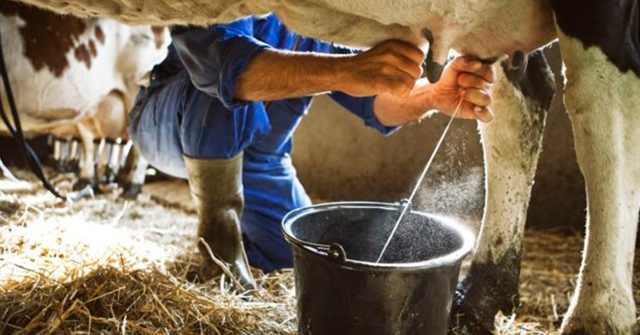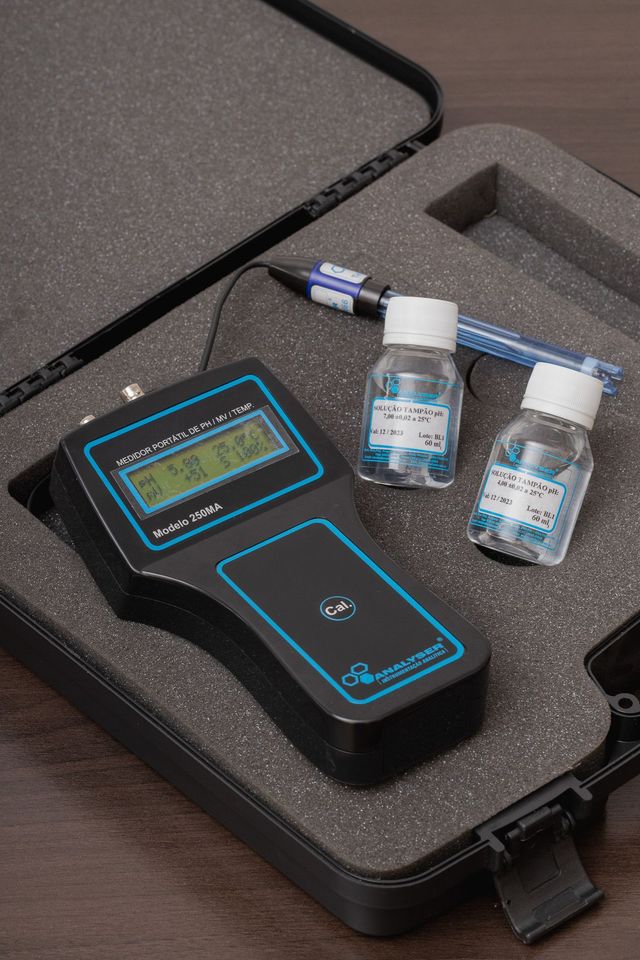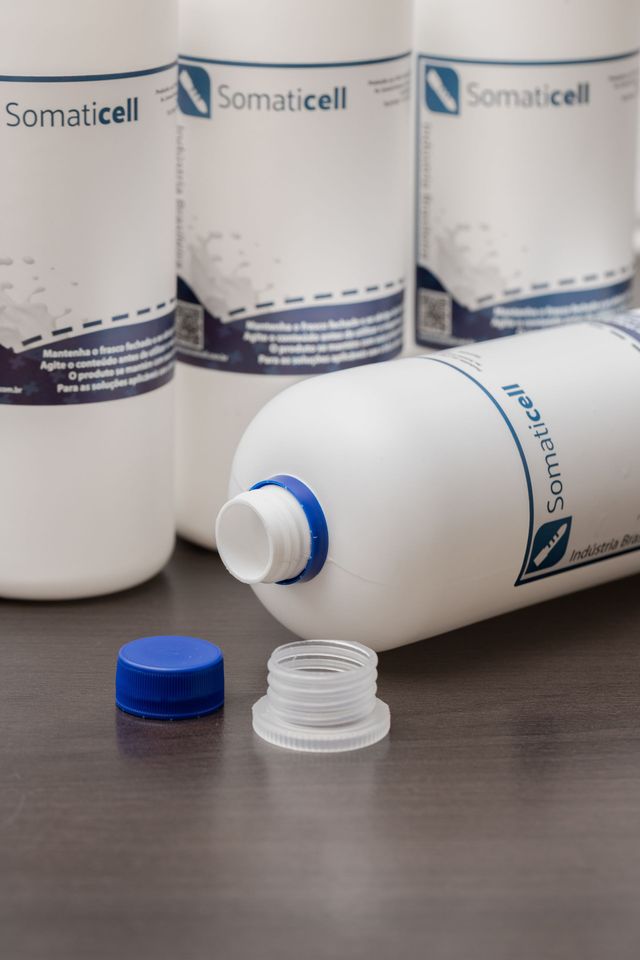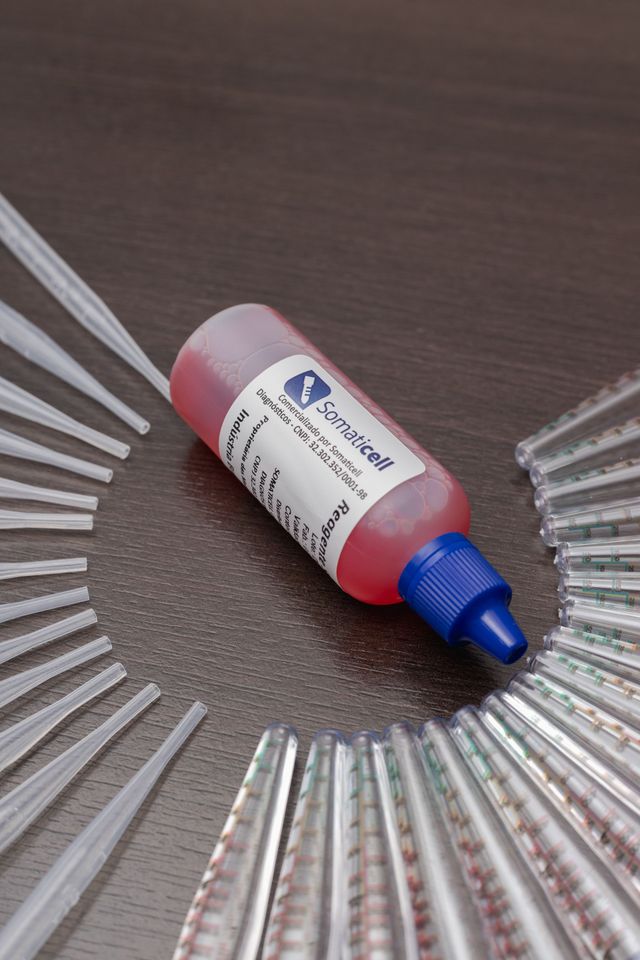Mastitis in the field: how to control
How does mastitis occur in the field and what measures are needed to avoid it?
Conforme tratamos em artigos anteriores, a mastite é uma inflamação do úbere causada por uma variedade de micróbios, principalmente bactérias, que ganham acesso ao interior da glândula mamária. Esses micróbios vivem na vaca, em seu úbere e em seu ambiente, incluindo o chão, fezes, solo, alimentos, água, plantas e equipamentos de ordenha e utensílios. A mastite no campo é um problema complicado e caro para o produtor de leite.
Não há soluções simples para sua prevenção. A melhor maneira de evitar mastite em seu rebanho é a prevenção, mas quando o quadro clínico se instala também é importante saber o que fazer para o seu controle.
In this article we separate some key points on how to minimize mastitis in the field, both in terms of treating the issue and preventing it. Good reading!
What are the causes of mastitis in the field?
It is important to note that, generally speaking, mastitis is usually multifactorial; resulting from factors that may include the farm's production system, the environment in which the cows are kept, the level of immunity of the cow and the type of invading pathogen causing the infection. But there are two main causes of mastitis and they include:
- Infection – Most cases of Mastitis usually occur as a result of a bacterial infection like Streptococcus agalactiae and Staphylococcus aureus. It is possible for these bacterial organisms to be transmitted to cows through contaminated bedding or equipment. The infection then triggers an immune response that will develop into mastitis in the cow.
- Injury – Mastitis can also occur as a result of injury to the cow's udder. The injury can be physical, chemical, mechanical or thermal.
Flies are also a big factor in spreading the disease, especially if cows are kept in confined areas with high fly populations. Flies carry the disease by moving bacteria from the surface of the skin into the breast tissue. This is the entry point for the pathogen which allows the bacteria to infect the udder.
Also, older cows are at greater risk of getting mastitis because they typically have larger udders than younger cows. Therefore, the chance of physical injury to the udder is greater, and in early lactation the udder often comes into contact with the ground, due to the low height of the animal, allowing the entry of pathogenic bacteria.
Calves can also spread the infection between quarters when nursing. Furthermore, if cross-sucking occurs between cows, bacteria can be spread to other cows.
Climate is also a risk factor for mastitis to occur. Cases of mastitis increase when the weather is hot and humid.
How is mastitis detected in cows?
The most obvious symptoms of clinical mastitis in cows are: Swollen udder, heat, hardness, redness or pain. In addition, the infected cow's milk takes on a watery appearance, and flocs, clots, or pus are often present.
Other common signs include reduced milk production, increased body temperature, lack of appetite and a reduction or reluctance to move due to pain from the swollen udder.
Devido à natureza infecciosa da mastite, ela normalmente deve ser tratada com antibióticos. Mesmo a mastite resultante da lesão deve ser tratada com antibióticos para prevenir e resolver qualquer complicação infecciosa da lesão. Para tratar a vaca pode ser ordenhada e em seguida, o antibiótico pode ser infundido diretamente na glândula infectada. É necessário entrar em contato com o seu veterinário para a escolha do antibiótico específico a ser usado, a dosagem correta e o método de aplicação, especialmente para evitar o abuso de antibióticos e o descarte desnecessário de leite.
Other forms of treatment and resolution of mastitis in cows is the administration of oxytocin to stimulate the letdown and flow of milk, in order to relieve the udder of the bacterial load and reduce its development. Also, the use of anti-steroids and anti-inflammatories can be given to reduce the swollen state and pain of the udder.
For mastitis that is not cured even after constant and prolonged treatment, the best option is to exclude the animal from the herd so that the infection (mastitis) does not spread to other cows in the cattle herd.
How can you prevent mastitis in cows on your cattle farm?
Now that we've covered how to treat mastitis in infected cows, let's take a look at prevention. These are some points of attention to which the producer should be aware:
- Meio ambiente: Um ambiente limpo otimiza a prevenção de patógenos da mastite ambiental. Para vacas secas alojadas no pasto, forneça às suas vacas sombra que é gerada entre campos e/ou árvores. Para vacas secas alojadas em um celeiro, camas limpas e confortáveis podem fazer uma diferença significativa na prevenção de mastite.
- Nutrição: Adicionar a quantidade sugerida e o tipo de minerais e vitaminas à alimentação de suas vacas pode ajudar a aumentar seu sistema imunológico e ajudar seu corpo a combater os patógenos de mastite. Quantidades adequadas de energia e proteína também são necessárias para um sistema imunológico forte
- Prevenir distúrbios metabólicos: Distúrbios metabólicos surgem quando a vaca entra em equilíbrio energético negativo, ou seja, quando não está consumindo ração suficiente para atender às suas necessidades. É fundamental manter suas vacas em temperatura baixa e comendo durante este tempo. No entanto, também é muito crítico não exagerar a energia fornecida na alimentação para vacas secas.
- Vacinação: Estabelecer um protocolo de vacinação para vacas secas e frescas pode reduzir significativamente a mastite em seu rebanho. Você deve trabalhar com seu veterinário para encontrar um calendário de vacinação que funcione para você e sua fazenda.
- Tratamento de vaca seca: Este é um dos pontos mais importantes dos programas de controle de mastite. Consiste no tratamento de todos os quartos mamários com antibiótico após a última ordenha, no final da lactação (início do período seco). ajudando a curar infecções anteriores, ao mesmo tempo em que ajudam a prevenir novas infecções
There is also a list of some general attitudes that can be taken by producers in order to mitigate their incidence:
- Hygienic management of cows, which includes good population management, effective disinfection preparation for good milk hygiene, health and disease control.
- Maintain a healthy and livable environment on your farm. In fact, managing the environment is far more important than the use of drugs. When treating active cases, make sure the treatment area is clean as more problems can occur with poor sanitation and unhygienic environment. Also, avoid keeping cows in confined areas as much as possible.
- Immediate identification and treatment of cases of clinical mastitis, including use of the most appropriate treatment for the symptoms and identification of the pathogenic agent.
- Regular and hygienic maintenance of milking equipment.
- Keep a good record of all aspects of mastitis treatment and cases, identify treated animals in order to monitor the incidence of infections, changes, treatment plans and prevention in the cattle herd.
Ensuring cows are getting the right, clean nutrition so they can maintain a strong immune system and are less prone to infectious microorganisms causing mastitis. Through it all, be sure to consult your veterinarian for a proper plan regarding the treatment and prevention of mastitis on your farm. This lessens long-term economic and financial losses.
Recommended milking procedures to prevent mastitis in dairy cattle
Correct milking procedures are important, regardless of whether the cows are hand-milked or automated. Preparing for milking reduces the number of contaminating microorganisms on the skin and stimulates milk let-down.
In addition to reducing this contamination, it decreases residual milk left in the udder at the end of milking, increases milk production, shortens milking time and reduces the spread of contagious and environmental organisms that cause mastitis and reduce milk quality.
The main milking procedures include the following:
- Provide cows with a clean, stress-free environment. Cows should not be startled or excited before milking, as this stress releases hormones that interfere with normal milk and reduce the cow's resistance to mastitis.
- When washing the cow or cooling her down with humidifiers, ensure that at least 30 minutes have elapsed prior to milk collection to minimize the likelihood of dirty water running into the udder region during milking.
- Wash the lower surfaces of the udder. Correct washing and massage release hormones for milk let-down. A sanitizing solution should be used in the bucket with an individual rag or paper towel to wash the udder. Do not reuse rags, cloth or paper towels, as this action allows cross-contamination between cows.
- Dry the udder properly. Residual moisture results in microbe-laden water being transferred to the milk bucket (with hand milking) or being drawn into the milking machine ducts.
- Hands should never come into direct contact with milk.
- Watch the milking units closely while they are attached to ensure they are adjusted correctly and to help prevent cup slippage. Slipping or leaking liners slow down the milking operation and can cause machine-induced infections. As most of the sliding occurs at the end of milking, this is the moment when the operator needs the most attention.
- Avoid irregularities in the vacuum flow due to sudden air intakes when connecting or removing accumulated milk.
- Never pull the milking unit from the udder while it is still under vacuum as this leads to udder infections as mentioned above.
- If using a bucket milking machine, make sure the bucket is hanging upside down so it can drain properly before reuse.
- Feed cows immediately after milking to ensure they do not lie down for at least 30 minutes.
- Make sure the cows lie down on a clean environment.
When milking cows infected with mastitis:
- Milk these cows last
- Wear gloves when milking mastitis-infected cows, discarding gloves when they touch the infected udder
- Rinse and sanitize milking equipment after milking each mastitis-infected cow
Control and treatment of mastitis in the field:
Monitoring and controlling bovine mastitis infection regularly is also an essential procedure for controlling mastitis in the field.
Uma das melhores formas de fazer isso de maneira efetiva e ágil é através da contagem de células somáticas (CCS), que possibilitará uma análise mais abrangente da situação da doença no rebanho.
Furthermore, it is important to administer correct treatments for each type of infection and for each cycle of the cow (dry period or lactation period). In some cases it is possible to treat mastitis naturally, without the administration of medication.
In cases of clinical mastitis, administering treatments in lactation cycles are most effective. While for subclinical mastitis treatments, the dry period is more effective. Therefore, dry cow therapy is highly recommended.
It is essential to know what bovine mastitis is, its causes and types, and to understand the importance of maintaining control over this type of infection, which is so common in the agricultural context.
However, more important than that, is absorbing this information and knowing how to use it in the application and adoption of good practices to control bovine mastitis.
Thus, by adapting the environment, educating its team of professionals, managing the entire milking process and understanding and applying appropriate treatments for each type of infection, it will increase the health of the herd, and consequently the productive capacity and quality. of milk from dairy cows.
Want to know how to further improve mastitis control procedures in the field?
Com nossas soluções de diagnóstico da mastite no campo, sua produção de leite será muito melhor e mais rentável! Para saber mais informações sobre nossos serviços, entre em Contact com a gente e fale com um de nossos especialistas!

Conheça nosso App
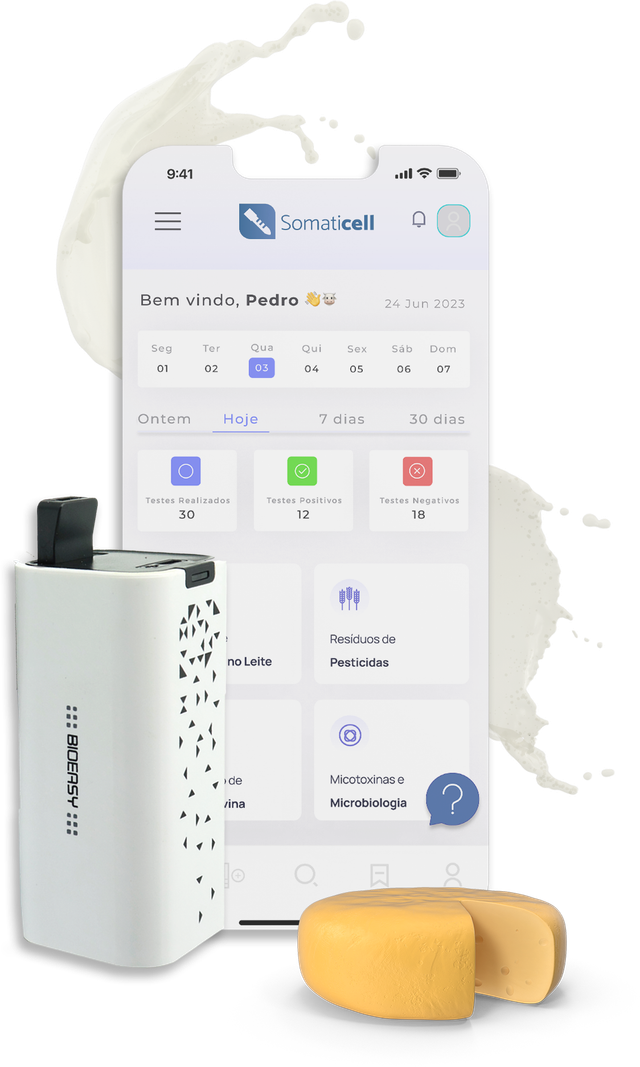
Our Educational Videos
Somaticell on Social Networks


